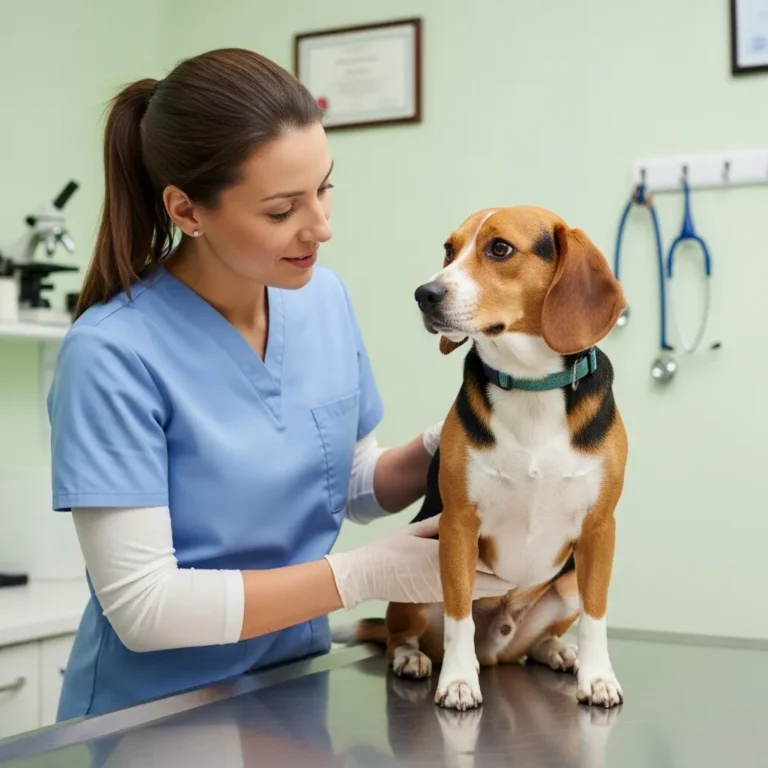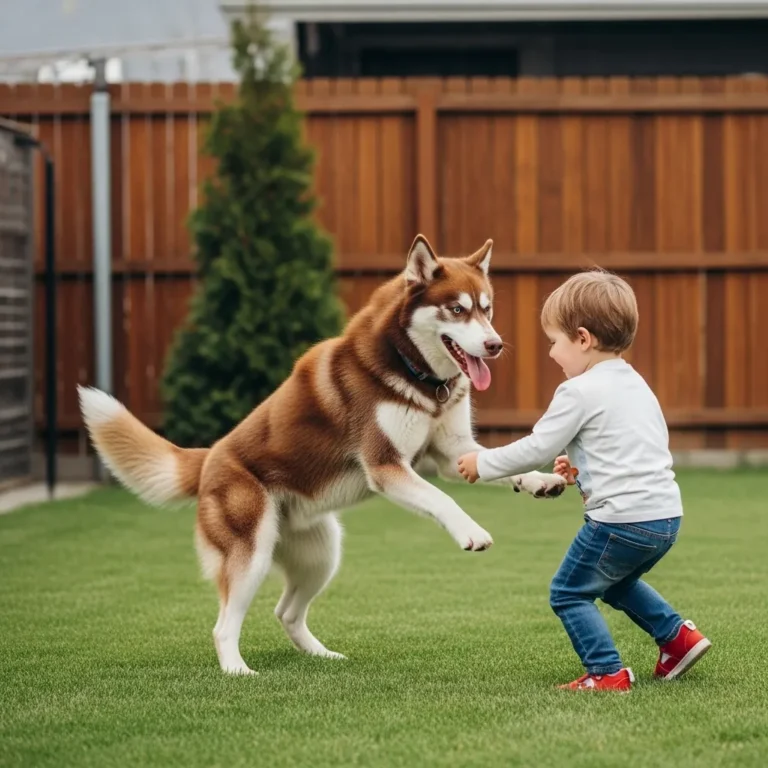
Author: DogsBlogSS Team
⚠️ Disclaimer: This article is for informational purposes only and is not a substitute for consulting a veterinarian.
Can Dogs Eat Chickpeas? A Friendly Look at the Facts
Every once in a while, while you’re enjoying your hummus or whipping up a batch of roasted chickpeas, you might pause and wonder: Can my dog have some of that? It’s a totally natural question — after all, many of us want to share healthy, wholesome foods with our furry friends. But when it comes to chickpeas, the answer isn’t quite as simple as a “yes” or “no.” Let’s unpack what experts say, what the potential benefits are, and how to serve chickpeas to your dog safely (if you decide to do so).
I. Core Question & Safety
Can dogs eat chickpeas? Are they safe?
According to PetMD: Yes — in moderation and when prepared correctly, chickpeas (also known as garbanzo beans) can be safe for most dogs. Veterinarian Sandra C. Mitchell, DVM, notes on PetMD that “as long as the chickpeas are freshly prepared and thoroughly cooked … they are a safe and nutritious treat for dogs. Still, there are a lot of “ifs”: how they’re cooked, what else is in the dish, how much your dog eats — all of these can tip the scale toward “safe” or “risky.”
Are chickpeas good or bad for dogs?
According to PetMD: Good — but carefully. Chickpeas bring some real nutritional value: they’re rich in protein, fiber, folate, potassium, and magnesium.
According to Dial A Vet: That said, they are not a silver bullet. According to dialavet.com, their benefits come with the caveat that chickpeas should never replace a balanced, vet-approved dog food.
According to Home of the South African Veterinary Association – SAVA: Also, some experts raise a flag: legumes (including chickpeas) are under investigation in higher-tier grain-free diets, because of a potential link with taurine deficiency–associated heart issues in dogs. So, while chickpeas aren’t inherently “bad,” they’re best treated as an occasional supplement or treat, not a main course.
What happens if a dog eats chickpeas?
According to the canine journal and the Dial A Vet and the Metro Paws Animal Hospital:
If your dog eats a moderate amount of plain, cooked chickpeas, they’ll likely be fine — possibly even benefited by extra fiber and plant-based protein. But if you feed too many chickpeas, or in the wrong form, your pup may develop gas, bloating, or diarrhea. In worst cases, if the chickpeas are seasoned with garlic or onion (very common in humus or spiced chickpeas), that can be dangerous. Also, because legumes may affect taurine absorption, feeding large amounts of legumes over time (especially in grain-free dog foods) is something some vets recommend caution around.
Can puppies eat chickpeas?
According to Dial A Vet: Puppies have more delicate digestive systems, so any new food — including chickpeas — should be introduced slowly and in very small quantities. According to Dial A Vet, puppies can have chickpeas in moderation, but it’s wise to get your vet’s opinion first. Always follow up with your veterinarian, especially for growing dogs, to make sure there’s no risk to their nutrition or digestion.
II. Preparation & Serving
How should I prepare chickpeas for my dog?
According to the petful and the Veterinary Care at Your Fingertips:
Preparation matters a lot. To make chickpeas safe and digestible for your dog:
- Use dried chickpeas or very simple canned ones.
- If dried, soak them overnight, then boil them until soft and mashable.
- Don’t add salt, oil, garlic, onion, or any spices — plain is best.
- Cool them down before serving.
This way, they are gentle on your dog’s stomach and reduce choking risk.
Can dogs eat raw chickpeas?
According to dogvetexpert: No, raw chickpeas are a poor choice. Dr. Carter (in a guide on DogVetExpert) warns that raw chickpeas are hard for dogs to digest and could pose a choking risk. Dried, uncooked chickpeas are similarly problematic — they remain tough and can irritate the digestive tract.
Can dogs eat canned chickpeas? Do they need to be rinsed?
According to the petmd and the Veterinary Care at Your Fingertips:
can dogs eat chickpeas from a can: Yes — but carefully. Many canned chickpeas contain too much sodium or additives. Vet-Dr. Sandra Mitchell recommends opting for low-sodium or “no salt added” varieties, then rinsing thoroughly to wash off as much sodium as possible. According to PetsCare, rinsing helps remove salt and preservatives, making them safer for your pup.
Can dogs eat roasted chickpeas?
According to dogvetexpert: Plain roasted chickpeas — that’s with no added salt, seasonings, or oils — can be okay, according to Dr. Carter from DogVetExpert, but they must be soft. Roasted chickpeas that are hard or crunchy pose a risk of choking, especially for smaller dogs. The texture should be safe and chewable.
Can dogs eat hummus?
According to PetMD: Generally, no. Although hummus is made from chickpeas, most hummus recipes include garlic, onion, lemon juice, and salt — all of which are harmful to dogs. That said, you can make a “dog-safe hummus” by mashing plain, cooked chickpeas (without additives) and using it as a food topper or stuffing it in enrichment toys.
Can dogs eat chickpea flour or chickpea pasta?
According to the Veterinary Care at Your Fingertips and the dogvetexpert:
- Chickpea flour: In small amounts — yes, as a treat or DIY dog treat ingredient — as long as it’s used in a plain recipe without harmful add-ins.
- Chickpea pasta: It’s trickier. According to Dr. Carter, chickpea pasta can be safe if it’s plain, but many store-bought versions have added salt or oils that can cause digestive upset. Use caution and read ingredient labels very carefully.
What about seasoned chickpeas?
According to dogsy: Avoid them. Seasoned or spiced chickpeas — like those flavored with garlic, onion, herbs, salt, or chili — can be harmful or even toxic. When it comes to dogs, plain is always safer than flavorful.
III. Nutritional Aspects & Benefits
Are chickpeas healthy for dogs? What are the benefits?
According to the Dial A Vet and the The Canine Nutritionist:
Yes, chickpeas can offer real nutritional benefits — when given properly and in moderation. According to Dial A Vet, these include:
- A boost of plant-based protein to support muscles
- Dietary fiber, which helps with digestion and can keep dogs feeling fuller
- Vitamins and minerals like B-complex vitamins, folate, potassium, iron, and magnesium
Gerald Pepin, a canine nutritionist, also highlights chickpeas as a “nutrient-rich legume” that can support immune function, heart health, and even blood sugar regulation.
What nutrients do chickpeas provide for dogs?
According to the petmd and the Veterinary Care at Your Fingertips:
Here’s a breakdown of key nutrients found in chickpeas:
- Protein: While not as complete as meat-based protein, chickpeas still supply a decent amount of plant protein.
- Fiber: Helps promote healthy digestion and regulate bowel movements.
- Folate (vitamin B9): Important for cell growth and repair.
- Potassium and magnesium: Support nerve function, muscle health, and overall metabolism.
- Other vitamins: Some amounts of vitamins A and B found as well.
Can chickpeas help with a dog’s digestion?
According to the houndsy and the Canine Journal:
Yes, in many cases. The fiber in chickpeas can contribute to smoother digestion, help regulate bowel movements, and even prevent both constipation and diarrhea when introduced properly. But: too much fiber too fast can backfire, causing gas, bloating, or loose stools. So it’s best to introduce chickpeas gradually.
Are chickpeas a good source of protein for dogs?
According to PetMD:
They are a supplemental source. Chickpeas do contain plant-based protein, which can support muscle health. But vets like Sandra Mitchell emphasize that chickpeas should not replace animal proteins in your dog’s diet. Dogs, especially adult ones, still need essential amino acids that come more reliably from meat-based sources.
IV. Potential Risks & Side Effects
Can chickpeas cause gas or bloating in dogs?
According to the Canine Journal and the dogsy:
Absolutely — this is one of the most commonly reported side effects. Chickpeas are high in fiber, and for dogs not used to such foods, that fiber can lead to gas, bloating, or even discomfort. Experts recommend introducing them slowly, starting with small portions, and watching how your dog’s digestion adjusts.
Can dogs be allergic to chickpeas? What are the signs?
According to petful: Yes, though it’s relatively rare. Dogs, like humans, can develop allergies to legumes. According to Petful, signs of a chickpea allergy might include itching, swelling, gastrointestinal upset, or even more systemic symptoms. If you ever spot those signs after feeding chickpeas, stop immediately and check with your vet.
Can chickpeas cause diarrhea or upset stomach in dogs?
According to Canine Journal: They can. Overfeeding or introducing chickpeas too quickly may result in diarrhea or vomiting, especially in dogs whose digestive systems aren’t used to legumes. That’s why starting small and observing how your dog reacts is so important.
How many chickpeas can a dog eat? What’s a safe amount?
According to PetMD:
Good question. According to PetMD (Dr. Sandra Mitchell), the general guideline is to limit chickpeas to no more than 10% of your dog’s daily caloric intake. Here are some rough serving ideas by dog size:
- Extra-small dogs (2–20 lb): ~1 tablespoon of cooked chickpeas, 2–3 times per week
- Small dogs (21–30 lb): ~2 tablespoons, 2–3 times per week
- Medium dogs (31–50 lb): ~3 tablespoons, 2–3 times per week
- Large dogs (51–90 lb): ~4 tablespoons, 2–3 times per week
- Extra-large dogs (91+ lb): ~5 tablespoons, 2–3 times per week
If you’re ever unsure, talk to your vet or a veterinary nutritionist — they can help tailor portions to your dog’s size, age, and health.
Are there any parts of the chickpea plant that are toxic to dogs?
According to Home of the South African Veterinary Association – SAVA: When we talk about feeding dogs chickpeas, we mean the cooked seeds (beans) themselves. There’s little to no reason for a dog to be eating other parts of the chickpea plant (like leaves or pods), and those typically aren’t part of a dog’s diet. The main risk doesn’t come from the plant parts, but from how the chickpeas are prepared and what else goes into the dish (seasonings, high sodium, etc.). The bigger concern — as mentioned — is overuse of legumes in dog food potentially interfering with important nutrients.
V. Alternatives & Related Foods
What are some dog-safe alternatives to chickpeas?
If you like the idea of giving your dog a plant-based boost, but you’re not set on chickpeas, you could try:
- Green beans (plain, steamed) — very low in calories, a favorite for many dogs
- Carrots — crunchy, sweet, and full of beta-carotene
- Cucumbers — hydrating and crunchy
- Pumpkin (plain, cooked) — good source of fiber
- Plain cooked lean meats — chicken, turkey, or beef (without bones or seasoning) remain excellent protein sources
Can dogs eat other legumes like lentils or beans?
According to the petful and the Metro Paws Animal Hospital:
Yes, but with similar precautions. Legumes like lentils, black beans, and kidney beans can be safe for dogs if cooked plain. However, just as with chickpeas, moderation is key. Too many legumes over time — especially in diets that heavily rely on them — may be associated with certain health risks (like the taurine-linked concerns raised in some veterinary communities). Always introduce them slowly, rinse canned legumes well, and avoid seasonings that are harmful to dogs (garlic, onion, salt, etc.).
Conclusion
According to PetMD:So, can dog eat chickpeas? Yes — but with a lot of care. They can be a healthy, fiber-rich treat or meal topper when cooked plainly and served in moderation. Experts like Dr. Sandra Mitchell, DVM, recommend limiting their use to around 10% of daily calories, and always preparing them simply (no spices, oils, or salt).
That said, chickpeas shouldn’t become a staple or substitute for high-quality, balanced dog food. And if your pup has a sensitive stomach, food allergies, or a condition like heart disease, talk to your veterinarian before adding legumes to the mix — especially in large amounts.
In short: if you’re intentional, cautious, and check with your vet, sharing a few cooked chickpeas with your dog can be a kind, nurturing gesture — not just for you, but for them too.
Notice : The DogsBlogSS editorial team is dedicated to providing accurate, research-based information about dog health, behavior, and care. All our articles are fact-checked using trusted veterinary sources such as VCA Hospitals, Merck Vet Manual, and the AKC.
you may like it









